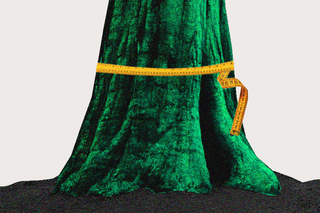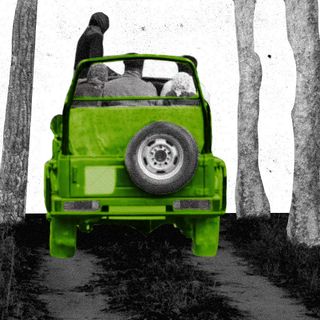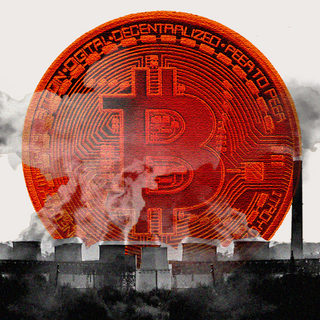
Trees Are Getting Bigger Due to Climate Change, Shows Study
Rising levels of CO2 in the atmosphere increasing the rate of photosynthesis and growth in plants is called the carbon fertilization effect.

“Trees are turning into gluttons.” This is probably not a sentence most people expected to read when they got out of bed this morning. Yet, here we are. Like a million other things, this “bulking up” of trees, too, is a result of climate change — as a consequence of trees absorbing the excess carbon dioxide in the atmosphere, a new study shows.
Published in the journal Nature Communications, the research found that forests are sucking carbon out of the atmosphere at a rate of about 13% of our cumulative emissions. The result was that the wood density — or biomass — of forests surveyed increased.
“Although such growth may not be noticeable to the average person, compared to the trees of 30 years ago, modern vegetation is about 20% to 30% bigger than it used to be. If applied to the Coast Redwood forests — home to some of the largest trees in the world — even a modest percentage increase means a lot of additional carbon storage in forests,” stated a press release on the recent study.
Rising levels of carbon dioxide in the atmosphere simultaneously increase the rate of photosynthesis and growth in plants, as NASA explains. This is called the carbon fertilization effect.
A 2010 study published in Nature Earth and Environment suggested that the carbon fertilization effect is leading to global greening, or the worldwide increase in greenness since, at least, 1981.
Related on The Swaddle:
How Climate Change Turned the Skies Over Beijing Yellow
The press release stated: “[Even] older large trees continue adding biomass as they age due to elevated carbon dioxide levels” — suggesting that it’s not just new trees that are experiencing the carbon fertilization effect; older trees are adapting too.
“It’s well known that when you put a ton of carbon dioxide in the atmosphere, it doesn’t stay up there forever. A massive amount of it falls into the oceans, while the rest of it is taken up by trees and wetlands and those kinds of areas,” noted co-author Brent Sohngen, professor of environmental and resource economics at The Ohio State University. “While we’re putting billions of tonnes of carbon dioxide into the atmosphere, we’re actually taking much of it out just by letting our forests grow.”
However, this isn’t the first time in the Earth’s history that global greening has been observed. The carbon content of the atmosphere during the Miocene epoch — 23.03 to 5.333 million years ago — is estimated to have been 450 to 550 parts per million. At present, they’re at 415 parts per million, but we’re headed towards early Miocene levels. Researchers involved in a 2020 study found that during the Miocene epoch, too, the plants were “unusually efficient” at sucking in carbon dioxide through the stomata.
“Carbon fertilization certainly makes it cheaper to plant trees, avoid deforestation, or do other activities related to trying to enhance the carbon sink in forests,” Sohngen added. “We should be planting more trees and preserving older ones, because, at the end of the day, they’re probably our best bet for mitigating climate change.” With increased vegetation growth, there’s also a “strong cooling effect” on the planet.
Related on The Swaddle:
Climate Change Could End Human Civilization by 2050
As many countries around the world are reeling under heatwaves, this sounds like good news. But unfortunately, just like overusing steroids to bulk up can prove to be detrimental to health, trees growing bigger due to carbon dioxide isn’t great either.
When crops photosynthesize more rapidly, they absorb relatively less calcium, iron, zinc, and other minerals vital for our nutrition — and eating food that lacks nutrients makes any being vulnerable to a range of diseases and infections.
Planting trees to offset global warming, then, isn’t a viable solution. “The notion that any significant percent[age] of the carbon humanity spews can be sucked up by planted trees is a pipe dream… [P]lanting trees in the wrong places would exacerbate global warming, create fire hazards, and devastate wildlife,” noted Ted Williams, who writes about wildlife issues. “Tree plantations are already destroying natural areas that are far more efficient at storing carbon — wetlands, for example… Ill-conceived tree plantings can dewater wetlands… Treeless landscapes are not only natural, in many cases—they’re better for the Earth, too.”
Moreover, as Tammo Reichgelt, a paleobotanist from the University of Connecticut, who led the 2020 study, explained, we can’t be entirely certain that all the plants in existence today will be able to adapt thus to increased levels of carbon dioxide in the atmosphere. Reichgelt’s apprehensions are based on most existing plants having developed in a low-carbon dioxide atmosphere.
“How it plays out is anyone’s guess. It’s another layer of stress for plants. It might be great for some, and horrible for others,” Reichgelt had noted.
Devrupa Rakshit is an Associate Editor at The Swaddle. She is a lawyer by education, a poet by accident, a painter by shaukh, and autistic by birth. You can find her on Instagram @devruparakshit.
Related


Haryana Plans to Develop a 10,000‑Acre Jungle Safari Park, Raising Environmental Concerns
